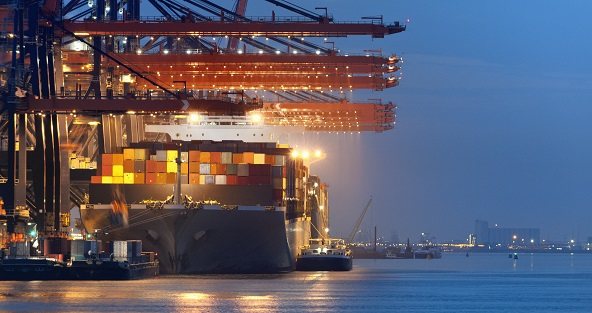We forecast that the crude tanker market will see cargo volume growth of between 2.0% and 3.0% in 2023 and between 3.5% and 4.5% in 2024. As average sailing distances are increasing, we estimate tonne miles growth of between 5.0% and 6.0% in 2023, and between 5.5% and 6.5% in 2024.
In the product tanker market, we forecast that cargo volume growth will be between 3.0% and 4.0% in both 2023 and 2024. Tonne miles growth is estimated at between 5.5% and 6.5% for 2023 and between 5.0% and 6.0% for 2024.
Despite some recent signs of slowing economic activity, China has, as expected, still been the driver of increasing global oil demand. This is due not least to an increase in travel and thus demand for jet fuel. The US Energy Information Administration (EIA) expects that China will account for more than half of the 3.4 million barrels per day (mbpd) increase in global consumption between 2024 and 2022. Global consumption is forecast to hit new record highs of 101.2 mbpd and 102.8 mbpd in 2023 and 2024 respectively.
Production cuts by Saudi Arabia and Russia have in the meantime forced crude oil prices up. These cuts do not so far appear to be impacting oil consumption but production may be about 0.5 mbpd lower than consumption during the third quarter of 2023 and as long as the cuts are in place. So far the cuts have been extended to September 2023.
Along with the higher prices, this imbalance is expected to lead to further draws on inventories which in turn will cause a reduction in crude oil shipments. The imbalance could also create a need to rebuild inventories once the market is again in balance, thus generating increased shipping demand.
Along with increases in consumption, refinery capacity is increasing in Asia, the Middle East, and Africa. Oil production is in the meantime expected to grow mainly in the Americas, where refinery capacity is not growing. Crude exports from the Americas are therefore expected to grow and make up an increasing share of global seaborne exports. This will also increase average sailing distances and add to tonne miles growth.
As refinery capacity in Europe is also unlikely to increase, we expect that this shift in refinery capacities will also increase sailing distances within the product tanker sector.
We do not expect any changes to sanctions on Russia’s oil and oil product exports within the next year and a half. The shifts in trades and increased sailing distances which have resulted will therefore remain.
While oil market dynamics do not appear to indicate major risks to growth, risks in the global economy could be a cause for concern.
The International Monetary Fund (IMF) forecasts growth in global gross domestic product of 3.0% in both 2023 and 2024. This is significantly below trend as the global economy grew at an average annual rate of 3.7% during the 2010s.
Concerns about the slowdown in the Chinese economy remain, and many banks have lowered their forecasts below the Chinese government’s growth target of 5.0% for 2023. In the meantime, the IMF predicts growth of 5.2% and 4.5% in 2023 and 2024 respectively.
The Chinese government has taken some steps to underpin activity but has so far refrained from a major intervention. High local government debt, a struggling real estate sector and lower than expected private consumption are concerns.
In the US, the tighter financial conditions and increasing costs to businesses and consumers caused by rising interest rates could also represent a risk. Consumers have nearly spent all the excess savings that they amassed during the COVID pandemic and there is a risk that private consumption will fall as a result.
Germany barely exited recession in the second quarter of 2023 after the two previous quarters saw the economy shrinking. However, year-on-year growth has still been a negative year to date. As Germany is the EU’s largest economy and lack of growth impacts the rest of the bloc, it could appear that risks remain.
However, the Organisation for Economic Co-operation and Development’s (OECD) Composite Leading Indicator (CLI), indicates that the worst could be over for the three countries as well as for the Group of 20 (G20) countries as a whole.
For the G20, the CLI began climbing in January 2023, predicting that economic activity will begin to increase six to nine months later.
In China, the indicator broke the one hundred mark in April 2023 and the economy could begin to grow faster than trend towards the end of the year.
We therefore believe that the global economy is on the right track and that risks in the economy are unlikely to interfere with the expected increases in oil demand, at least for now.
Source: Hellenic Shipping News





